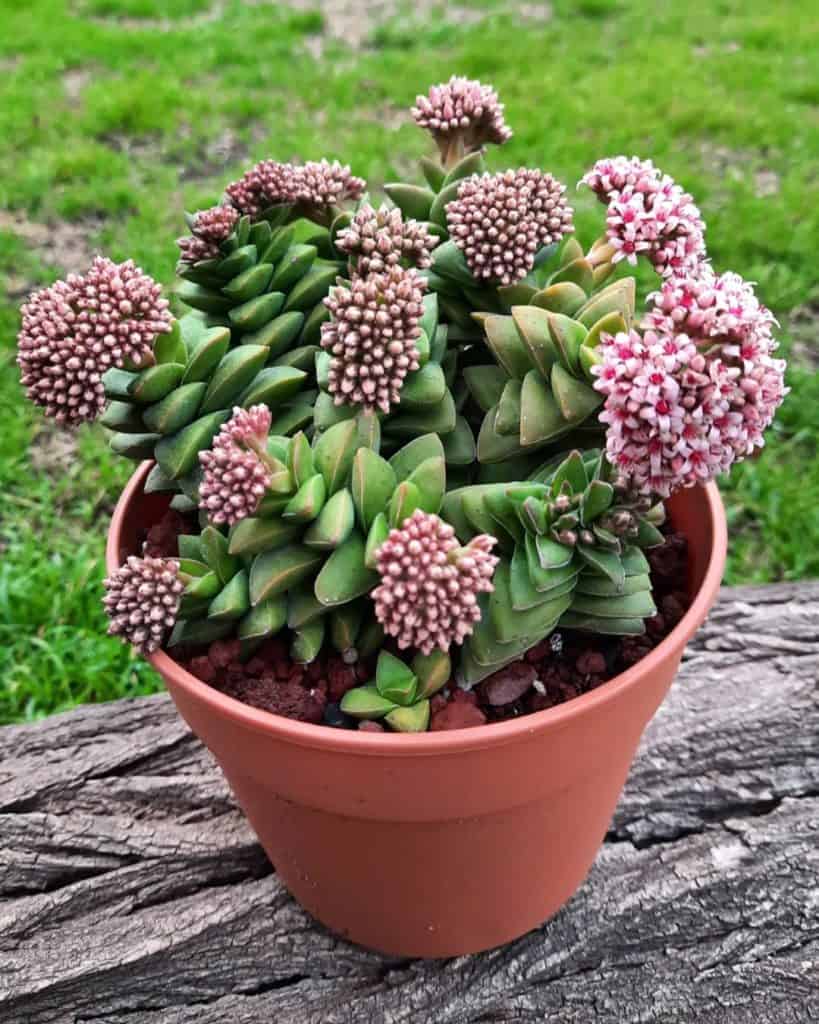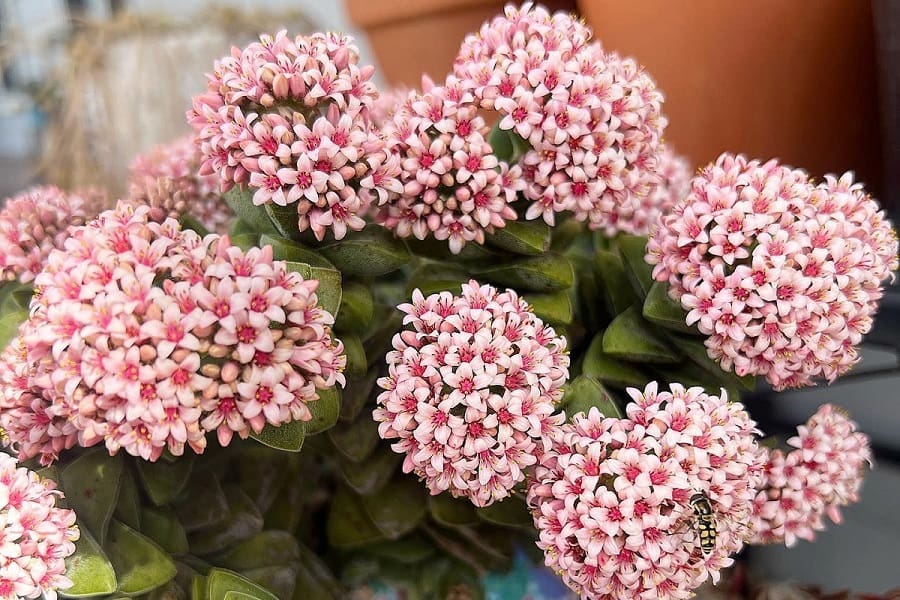Crassula Springtime: Characteristics and Care
Plants add vibrancy and life to any space, and Crassula Springtime is no exception. This compact succulent boasts thick, green leaves arranged in neat rosettes along its stems. But what truly sets it apart is its stunning display of blooms during the spring months.
Imagine clusters of delicate pink flowers bursting forth, each with a vibrant red center. It’s a sight that will brighten up any room or garden. And the best part? Crassula Springtime is believed to be a hybrid of two remarkable species, Crassula rupetris and Crassula perfoliata var minor.
If you’re a plant lover or simply appreciate natural beauty, read on to learn more about this captivating succulent and how to care for it.

Related Post:
Crassula Lower Classifications
Contents
Crassula Springtime Care Guide
Light
Crassula Springtime loves lots of sunshine! Place it on a sunny windowsill where it can soak up strong, bright light and some direct sunlight. This succulent thrives best with full to partial sun exposure. If it doesn’t get enough light, it may grow spindly and fail to produce its stunning Crassula Springtime flowers. This succulent is better suited as an outdoor plant rather than an indoor one.
Water
Like other succulents, Crassula Springtime doesn’t need frequent watering. Too much water can harm the plant, so be careful not to overwater or leave it sitting in water. During the growing months (April to September), give it regular waterings. But in autumn and winter when it’s dormant, water very sparingly. The best approach is to let the soil dry out completely, then give it a good soaking.

Soil
Crassula Springtime loves well-draining, gritty soil with low organic content. Adding pine bark or coconut coir can help improve drainage. This succulent doesn’t do well in dense, moisture-retaining soil.
Fertilizer
In general, Crassula Springtime doesn’t need much fertilizer. Too many nutrients can cause lush growth and ruin its sleek, sophisticated look. During spring and summer (its growing season), you can feed it with a balanced liquid fertilizer diluted to half-strength every two weeks. Avoid fertilizing in winter.
Climate
The Springtime Crassula thrives in warm temperatures between 60°F to 75°F (15.5°C to 24°C). It doesn’t like cold, damp conditions, which can cause discoloration, mushiness, and yellowing. In winter, keep it above 50°F (10°C). If you live in a cold climate, grow Crassula Springtime indoors, ensuring it gets enough sunlight to bloom its lovely Crassula Springtime flowers. It’s hardy in USDA zones 9b to 11b.
Pests and Diseases
The Springtime Crassula is generally free from serious pests or diseases. However, overwatering can lead to fungal issues and root rot. It may also attract aphids or mealybugs.

Crassula Springtime Propagation
- Leaves: Use a healthy, full leaf from the mother plant. Let it callus over, then plant in well-draining soil. Water when completely dry.
- Cuttings: Take a 2-3 inch stem cutting and plant in a 2-3 inch pot with equal parts sand and peat moss. Keep in bright light at room temperature.
- Offsets: Remove offsets from the main plant with a sharp knife. Let them callus, then replant in well-draining soil. Water when dry.
- Seeds: Not a common method due to slow growth. Sow seeds in autumn, mixing with sand and spreading evenly on the soil surface. Keep moist until seedlings appear, then allow to dry between waterings.
